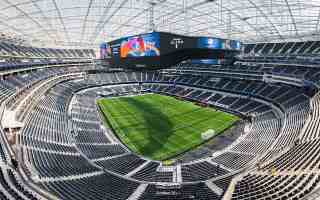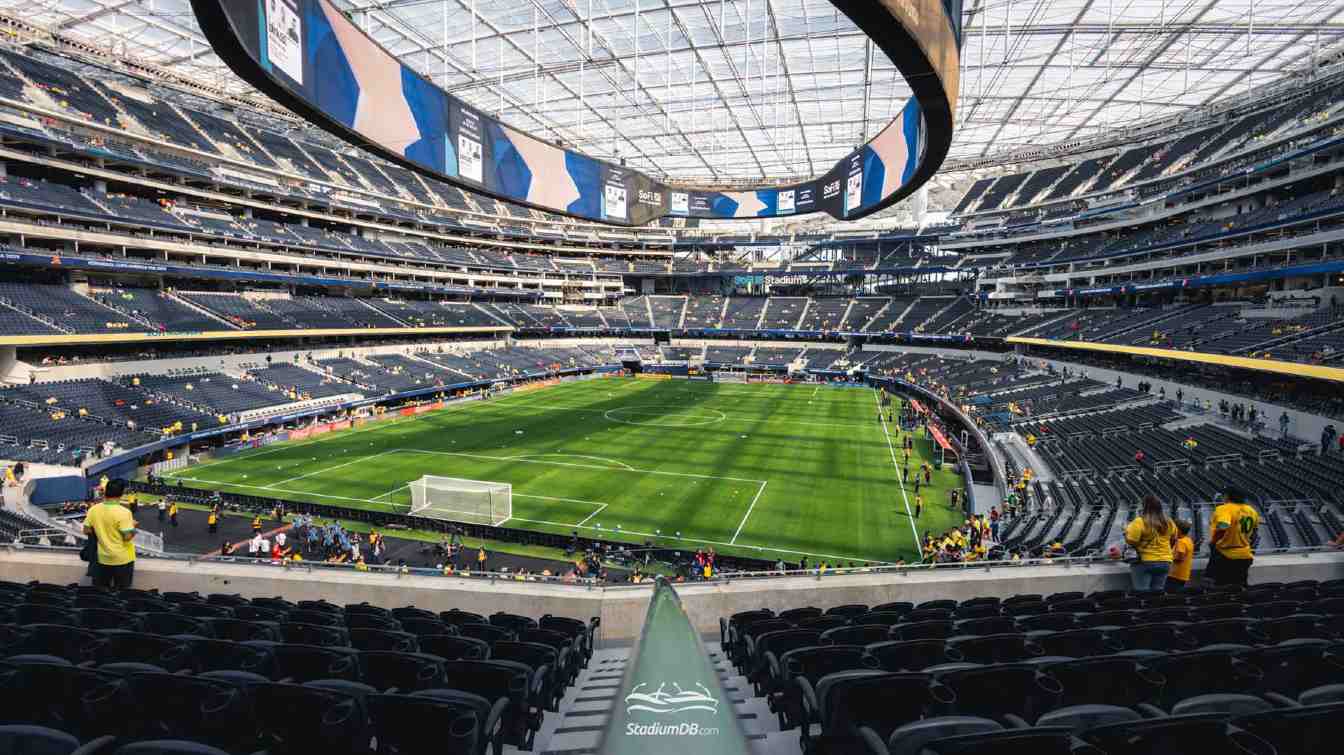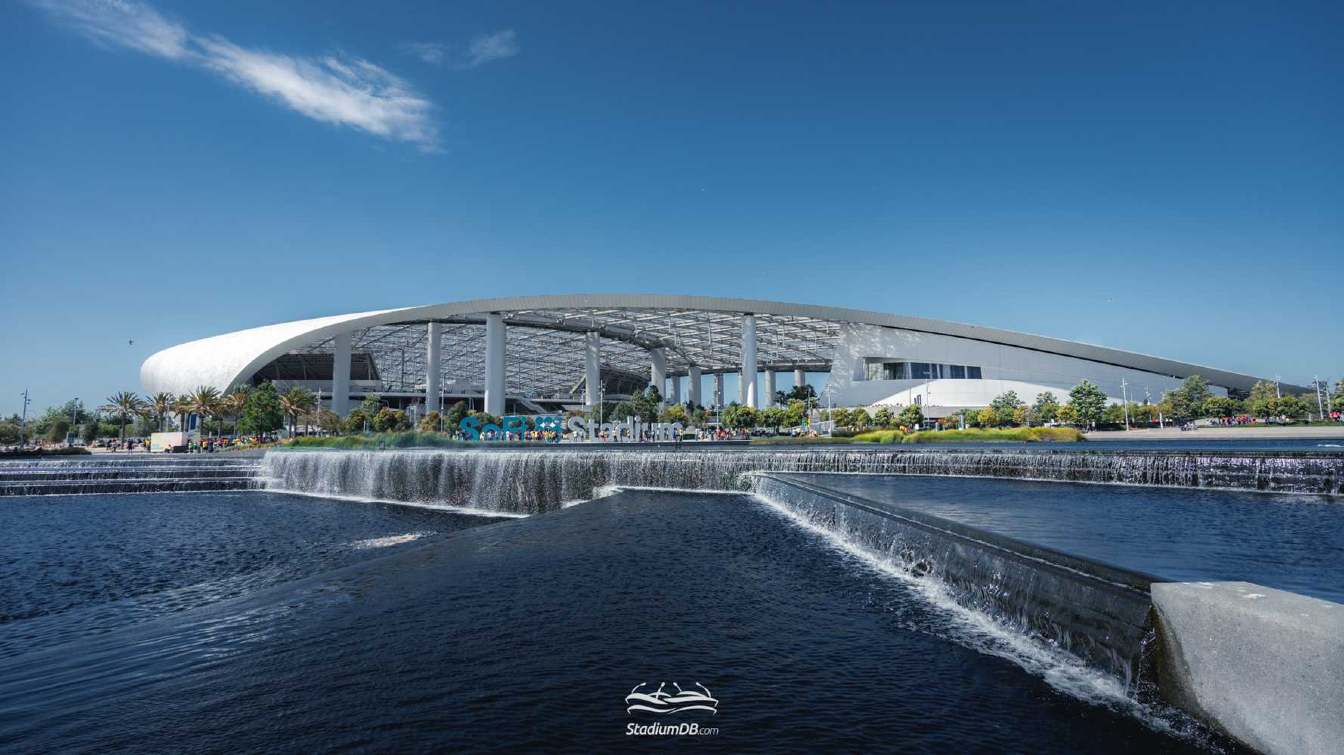USA: SoFi Stadium tests new turf ahead of 2026 World Cup
source: StadiumDB.com; author: Jakub Ducki
 SoFi Stadium will soon serve as a testing ground for an innovative hybrid turf system. The new grass technology will be tested during the Concacaf Nations League matches on March 20 and 23.
SoFi Stadium will soon serve as a testing ground for an innovative hybrid turf system. The new grass technology will be tested during the Concacaf Nations League matches on March 20 and 23.
Advertisement
Hybrid turf – new standard in football
SoFi Stadium, primarily used by the NFL’s Los Angeles Rams and Los Angeles Chargers, currently has an artificial playing surface. However, FIFA regulations require natural grass for the World Cup. The solution is an innovative hybrid turf system, which consists of a mix of natural grass and synthetic fibers embedded in a Permavoid drainage system.
This type of turf offers several advantages over traditional grass. Thanks to a special ventilation system, oxygen can be delivered directly to the root zone, ensuring optimal growing conditions. Additionally, the technology allows for rapid drainage in case of excessive moisture. Hybrid turf is also more resistant to damage and less prone to irregularities, significantly improving player comfort and safety.
Turf issues at american stadiums
Ensuring proper playing surfaces is one of the biggest logistical challenges of the 2026 World Cup. Seven of the eleven U.S. stadiums selected for the tournament currently have artificial turf, which is not allowed in international football. Criticism of NFL stadium surfaces has been growing for years, especially after last year’s Copa América, when players repeatedly complained about poor playing conditions.
For example, U.S. midfielder Weston McKennie noted after a match at Mercedes-Benz Stadium in Atlanta that the turf was uneven and fell apart with every step. Similar concerns were raised by Argentina’s players, who compared the surface to a trampoline.
Massive logistical undertaking
To ensure the highest-quality playing surfaces, World Cup organizers have launched an ambitious plan to transport and install turf in stadiums that do not currently have natural grass. The plan includes delivering the turf in temperature-controlled trucks, carrying carefully cultivated rolls of grass to venues across the United States.
To meet the demand, specialized turf farms in Washington state are growing hybrid grass under controlled conditions. Once the grass reaches optimal maturity, it will be cut and transported in rolls, which will then be installed as a uniform playing surface. Every step of this process is monitored four times a day, from soil moisture levels and nutrient content to precise cutting and transport.
Testing before big tournament
SoFi Stadium will be one of the first venues to test this new technology, with the Concacaf Nations League matches on March 20 and 23 serving as a trial run ahead of the World Cup. This event will help assess how the turf performs under heavy use and identify any necessary adjustments before similar surfaces are installed at other stadiums.
Stadium staff are already conducting extensive tests, comparing grass growth conditions in both direct sunlight and shaded areas under SoFi Stadium’s roof. An additional test area has been set up in the parking lot, where backup rolls of turf are being cultivated for potential replacement if needed.
Innovative technology for football
The 2026 World Cup will be the first tournament of this scale to use hybrid turf in stadiums originally designed for American football. While this technology has been used at some Premier League venues in Europe, it is now facing its most rigorous test in a global tournament setting.
Installing these surfaces requires precise coordination and significant financial investment. Each field will need continuous maintenance, including specialized irrigation systems, LED lights that simulate sunlight, and daily soil structure testing.
This is the most meticulously managed grass in the world
say experts involved in its cultivation and installation. Organizers are confident that this solution will provide ideal playing conditions and prevent the issues that have sparked controversy in the past.
The work on new playing surfaces will continue for the next 15 months, leading up to the tournament’s kickoff in June 2026. During this period, organizers will conduct extensive tests to ensure the turf meets FIFA’s highest standards.
Advertisement
 StadiumDB
StadiumDB
